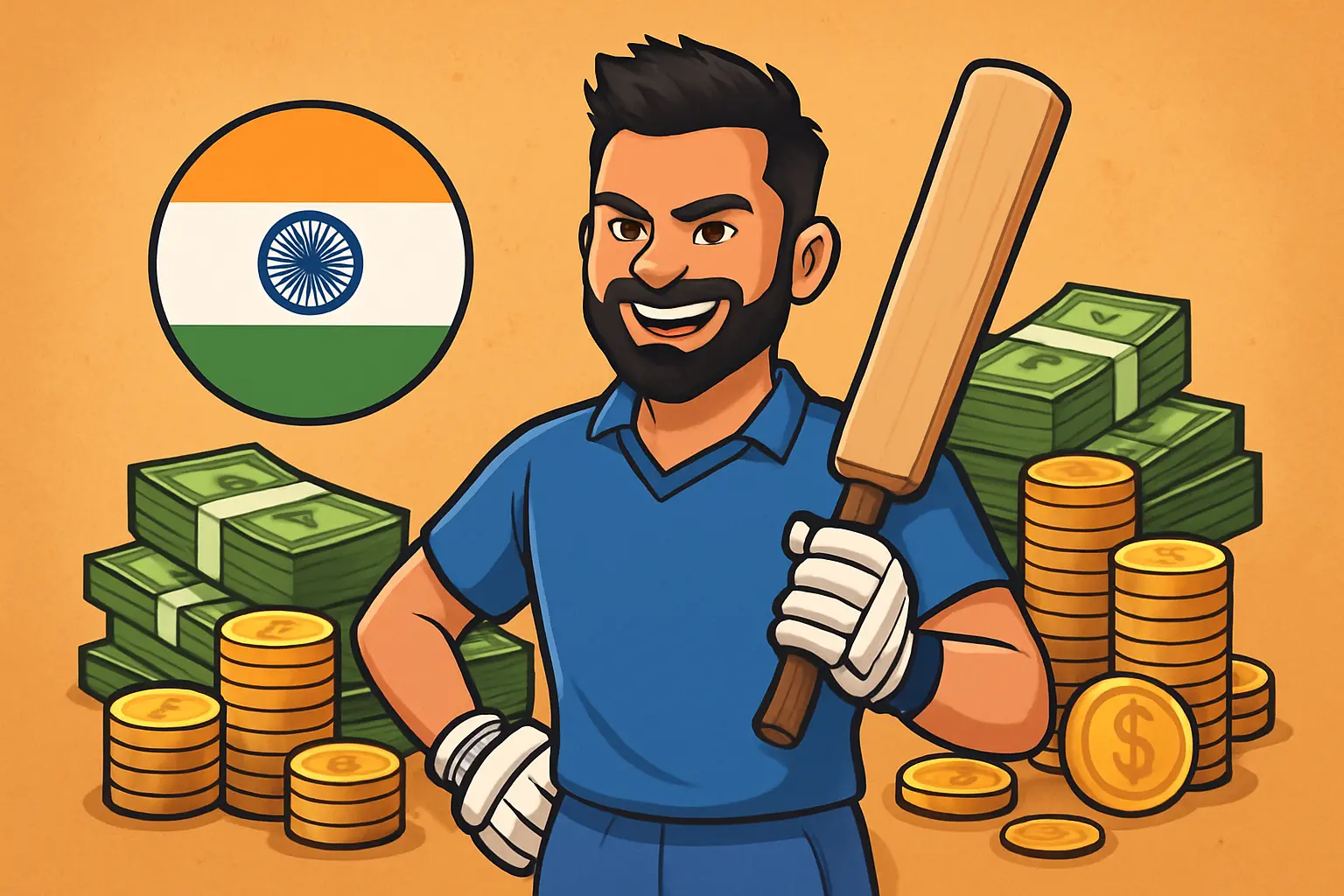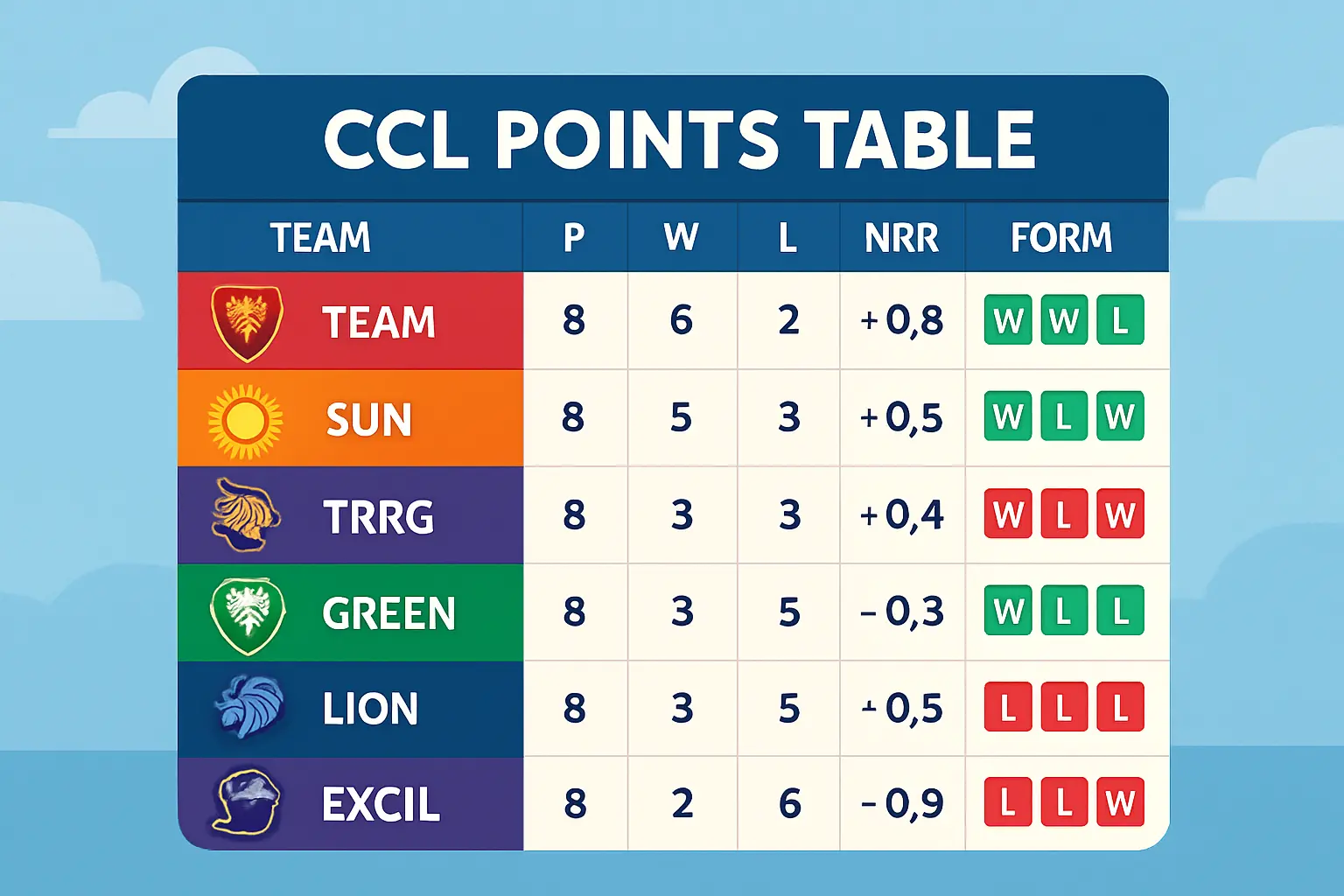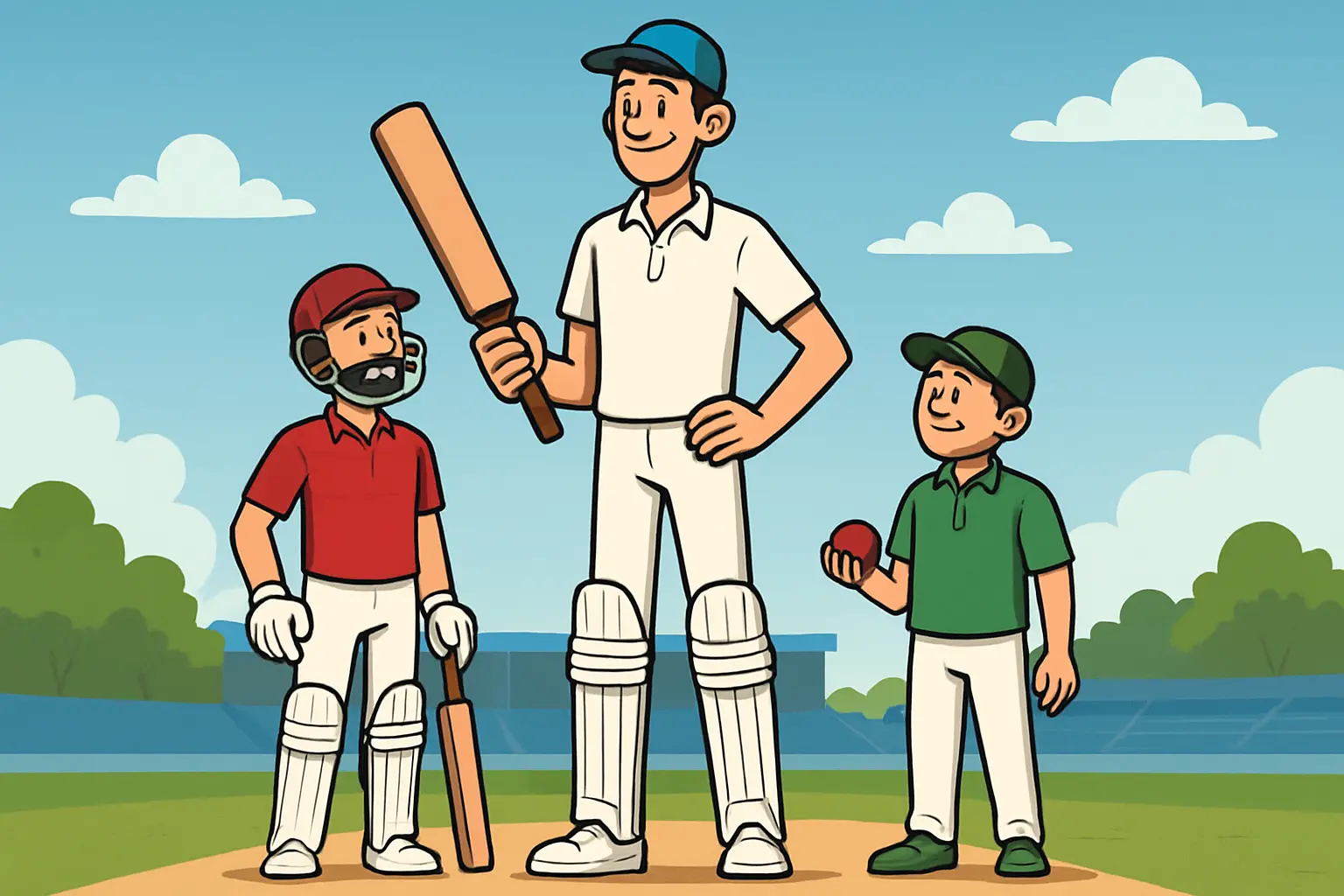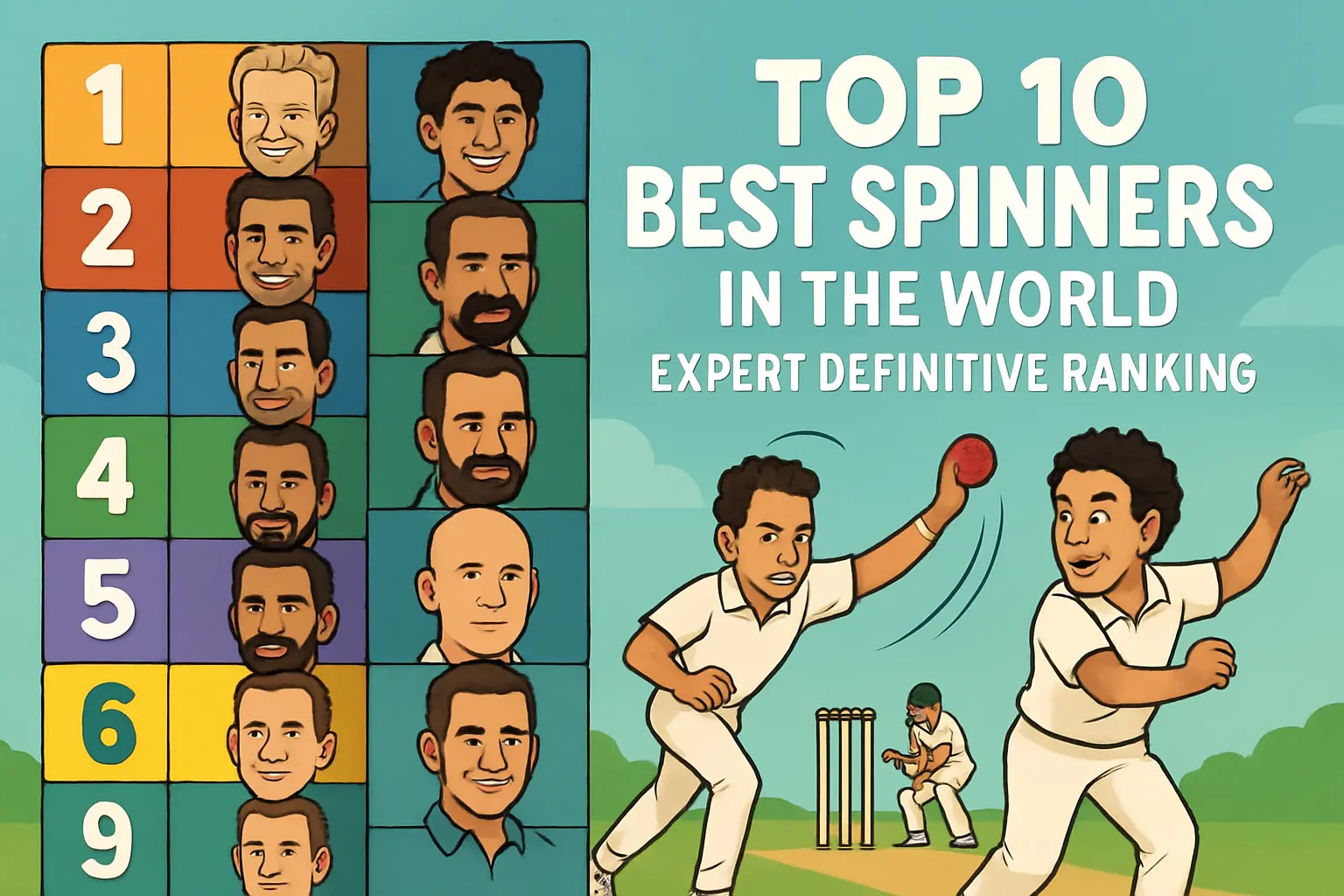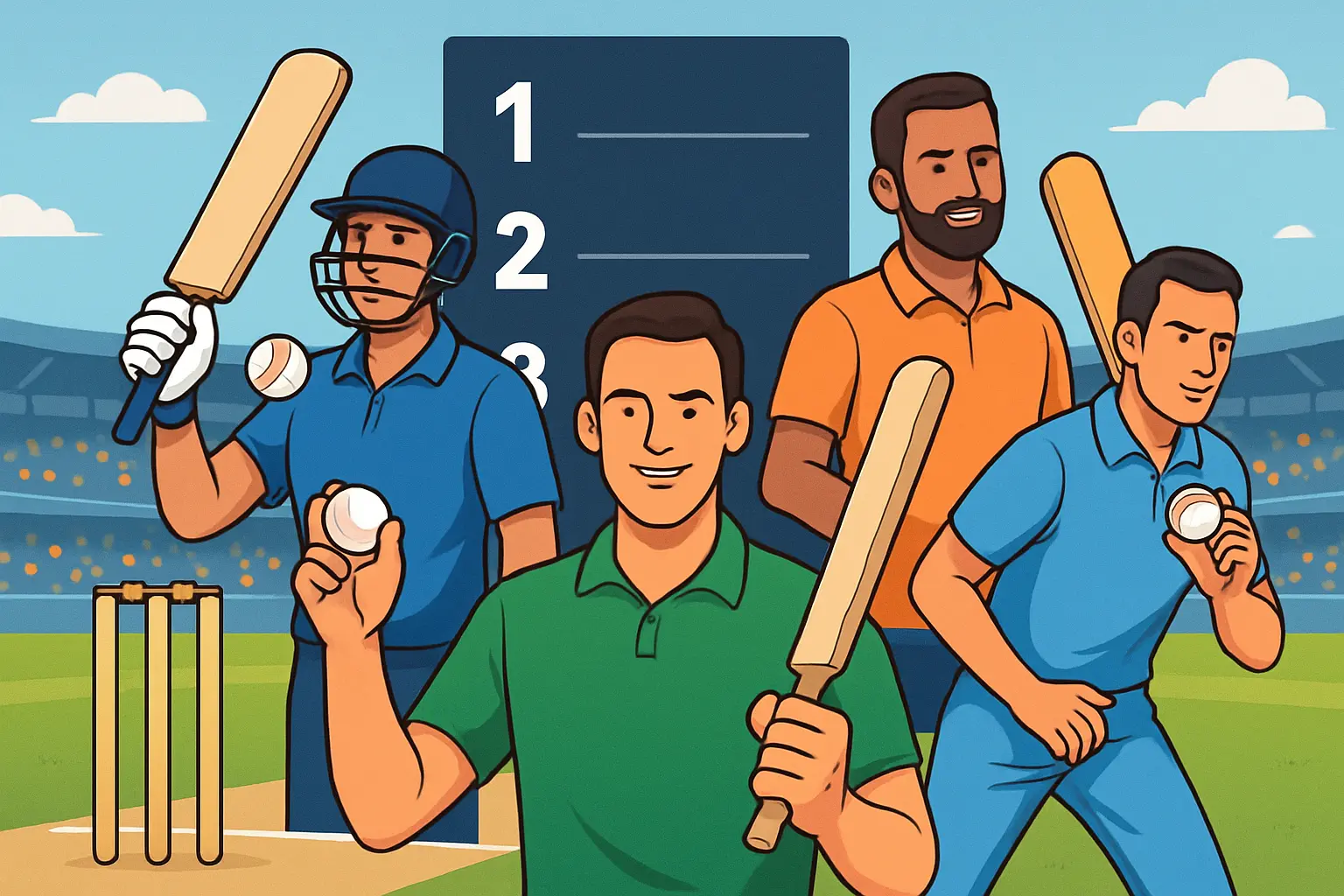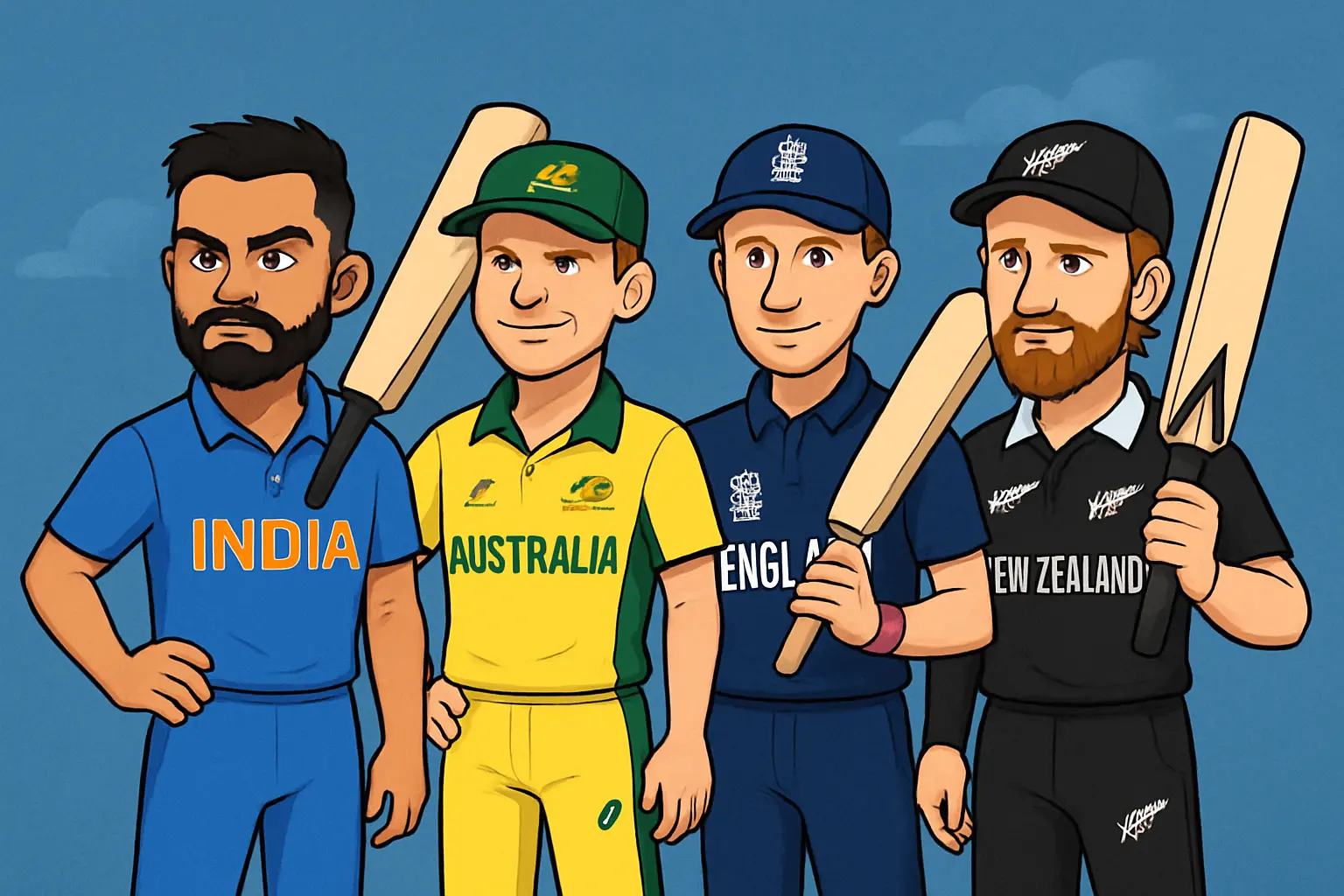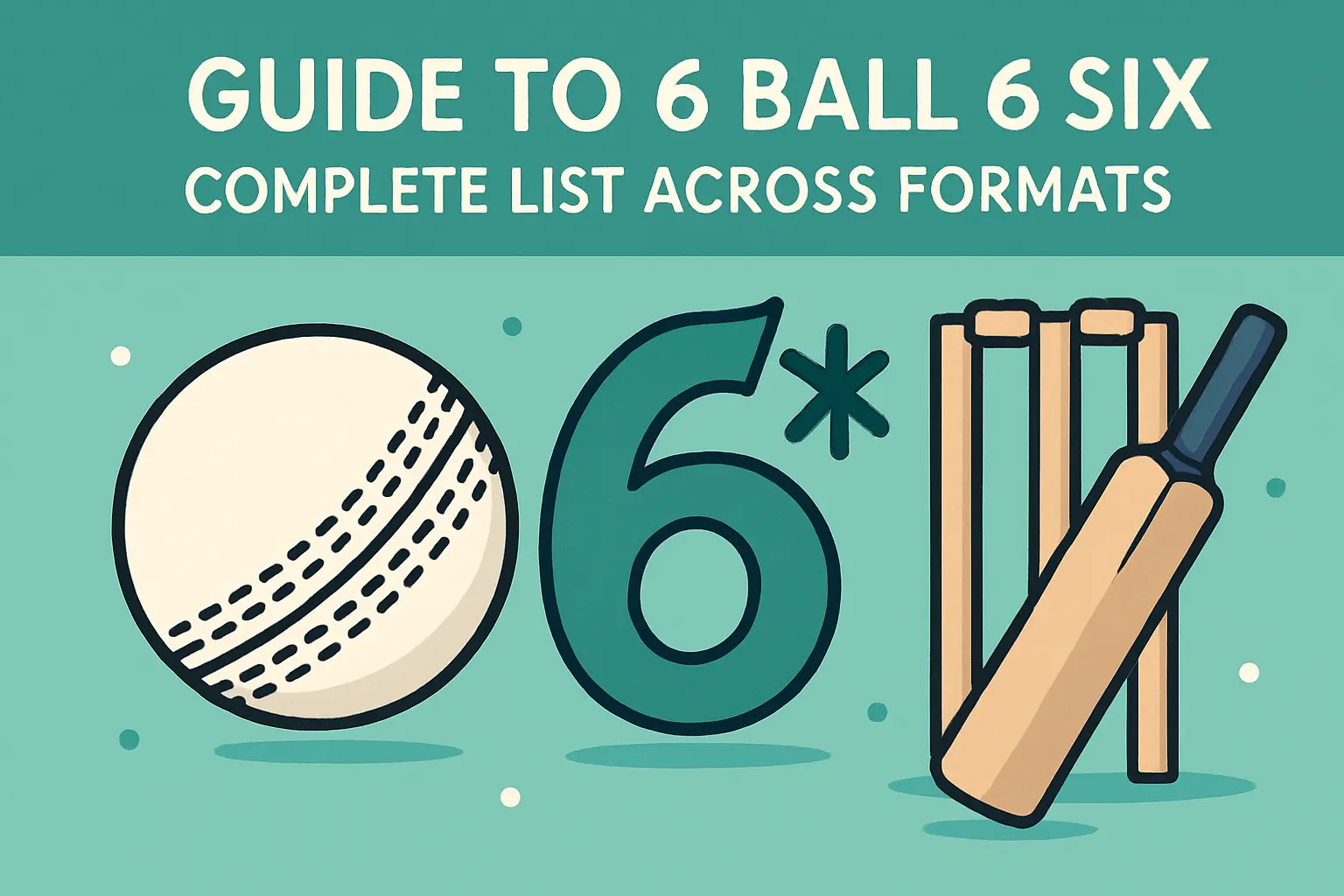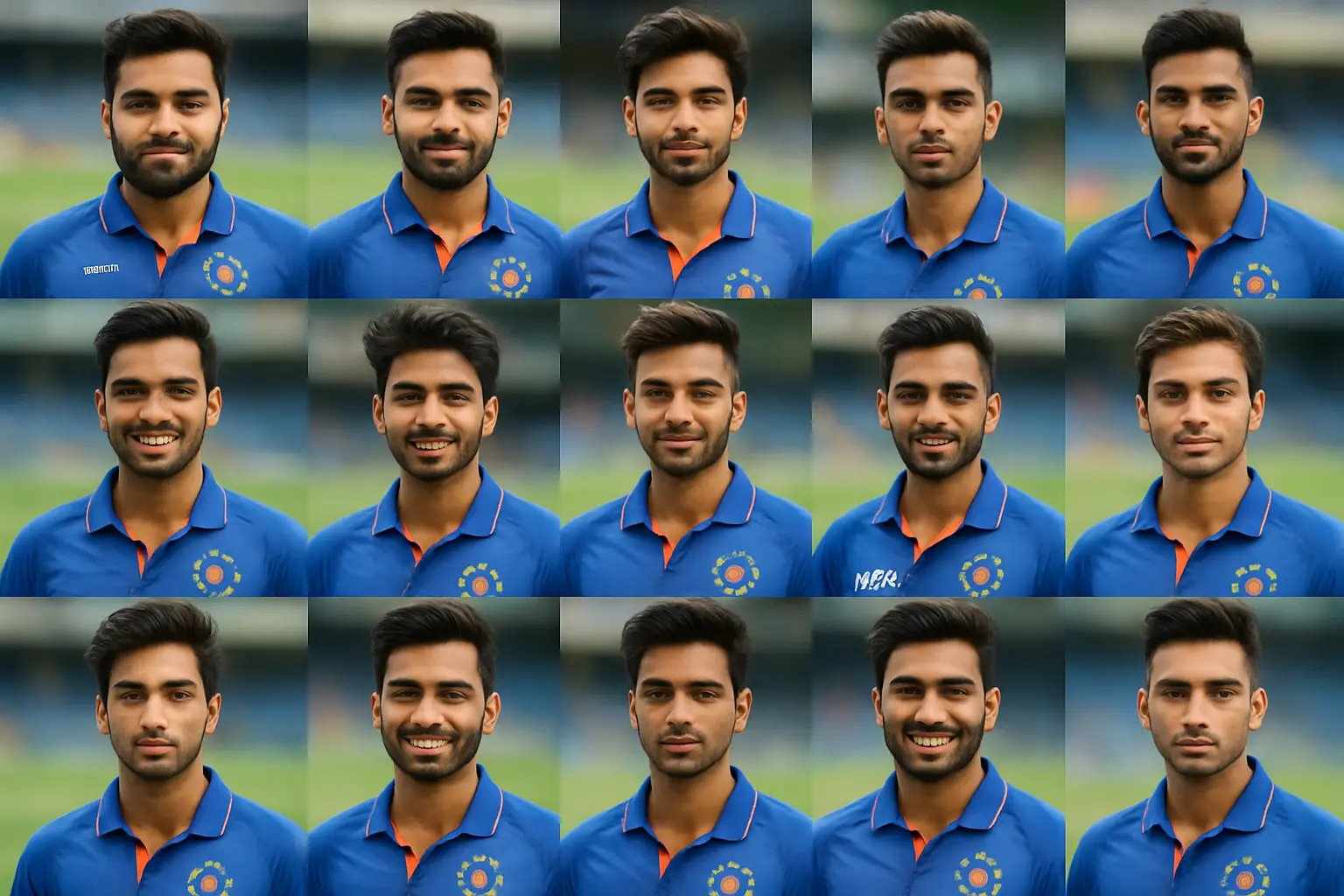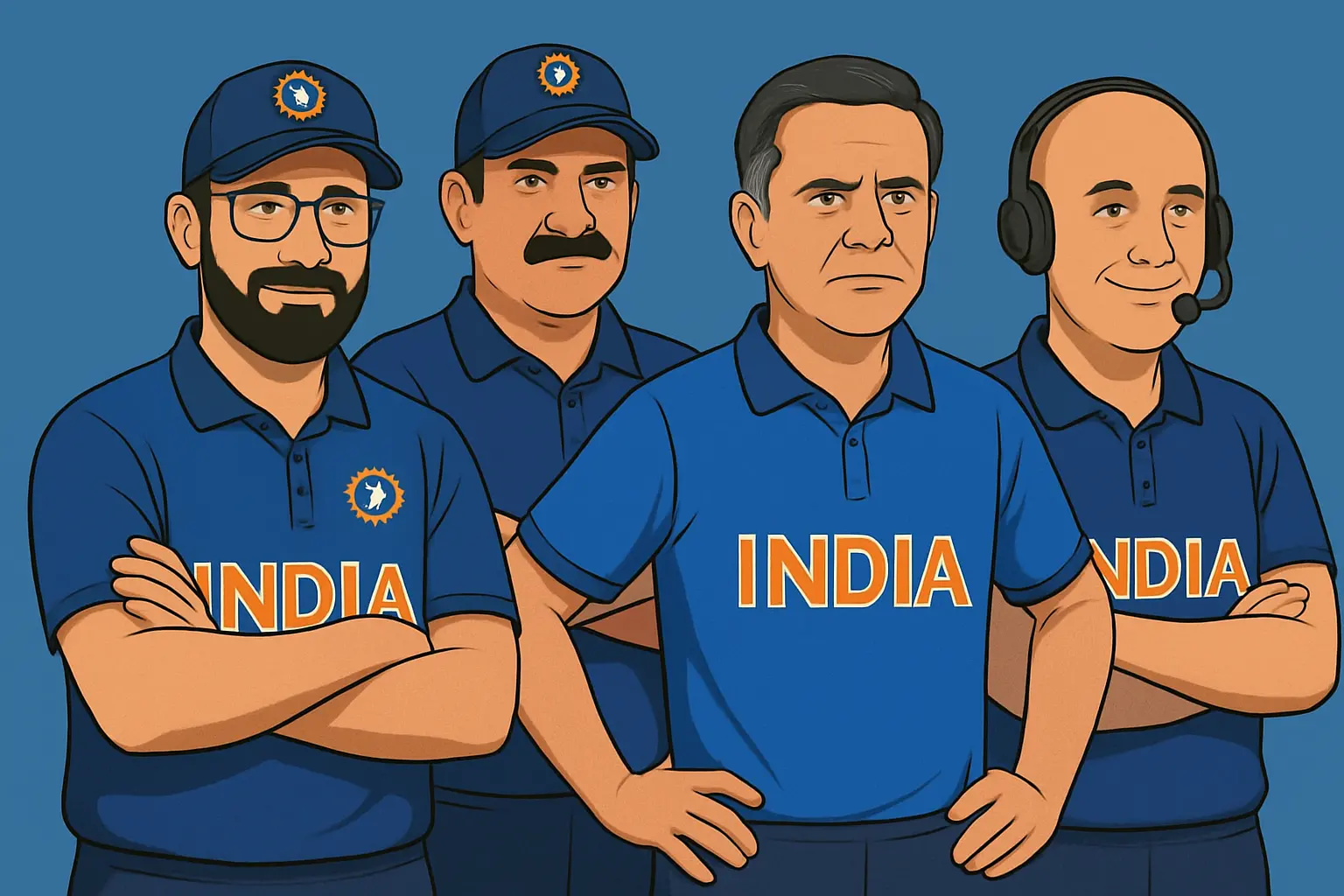Cricket does more than set the rhythm of a nation’s afternoons; it creates the kind of cultural gravity that turns athletes into enterprises. In India, a handful of cricketers now sit at the center of a sprawling sports economy powered by television deals, the IPL’s franchise model, and brand advertising that still believes star power sells everything from fintech to footwear. The result is a set of fortunes that rival top entertainers and CEOs. Yet raw numbers on a screen never tell the whole story. To answer who the richest cricketer in India is, you have to know how the money really flows, what counts as “net worth,” and where equity and brand value matter more than a central contract.
This report blends on-field economics with off-field business strategy. It lists the richest Indian cricketers in rupees and dollars, explains where that wealth comes from, and puts individual careers in context. You get a transparent methodology, numbers with ranges rather than click-bait absolutes, and a careful separation of active players, retired legends, and the leaders in the women’s game. It reads like a front-row account because those who’ve lived this ecosystem know the leaks in the dressing room of public data: franchise contracts change subtly, endorsement deals hide performance-based escalators, private-company stakes revalue overnight, and “net worth” chatter throws around entertainment-friendly but finance-shaky claims. This piece respects your time and your intelligence.
Methodology and currency note
- Definition of net worth: Estimated value of financial and real assets minus liabilities, attributable to the player as an individual (or via personal holding companies). Included: BCCI retainer and match fees accrued to date, IPL salaries/retainers, endorsement income (multi-year contracts estimated on straight-line basis unless public milestones are known), equity stakes in startups or private ventures (valued at last reported/credible funding or listing reference), dividends and profits from businesses, and real estate owned or disclosed. Excluded: speculative rumors, family wealth not controlled by the player, uncorroborated crypto or other shadow assets, and any unverified “friend-of-a-friend” numbers.
- Source types: BCCI central contract slabs, IPL auction/retention disclosures, franchise announcements, company filings for listed entities and press releases for funding rounds, brand deal announcements, reputable financial rankings and profiles, athlete agencies, and consistent reporting across major sports-business media.
- Conversion: INR to USD is shown at INR 83 to USD 1 for clarity. All dollar figures are rounded.
- Presentation: Ranges are used when private stakes, ongoing endorsements, or non-public property values create uncertainty. Individual “breakdown by stream” figures are indicative and rounded.
Executive snapshot: richest cricketer in India
At the top, two names vie for the crown: Virat Kohli and Sachin Tendulkar. Depending on how you value private stakes and enduring brand equity, the order can flip. Our blended methodology places Virat Kohli marginally ahead today, largely due to current endorsement velocity, the compounding effect of consumer brands he co-owns, and recent equity revaluations. Sachin Tendulkar remains the gold standard in cricket monetization, with a portfolio that ages like a blue-chip stock. MS Dhoni is a close third, still a commercial juggernaut through mass brands and IPL relevance.
Top richest Indian cricketers (overall, active plus retired)
Note: Estimates in INR crore with USD approximations in parentheses. Ranges reflect private holdings and timing differences in contracts.
- Virat Kohli — ~ INR 1,200–1,300 crore (USD ~145–157 million)
- Sachin Tendulkar — ~ INR 1,150–1,250 crore (USD ~139–151 million)
- MS Dhoni — ~ INR 1,000–1,100 crore (USD ~120–133 million)
- Sourav Ganguly — ~ INR 520–650 crore (USD ~63–78 million)
- Yuvraj Singh — ~ INR 450–520 crore (USD ~54–63 million)
- Rohit Sharma — ~ INR 260–320 crore (USD ~31–39 million)
- Rahul Dravid — ~ INR 300–400 crore (USD ~36–48 million)
- Gautam Gambhir — ~ INR 250–350 crore (USD ~30–42 million)
- Hardik Pandya — ~ INR 190–230 crore (USD ~23–28 million)
- KL Rahul — ~ INR 150–200 crore (USD ~18–24 million)
- Rishabh Pant — ~ INR 120–180 crore (USD ~14–22 million)
- Ravindra Jadeja — ~ INR 110–160 crore (USD ~13–19 million)
- Jasprit Bumrah — ~ INR 100–140 crore (USD ~12–17 million)
- Suryakumar Yadav — ~ INR 60–90 crore (USD ~7–11 million)
- Shubman Gill — ~ INR 50–80 crore (USD ~6–10 million)
The precise order between the middle names can shift as deals renew, investments crystallize, or IPL salaries are restructured. The top three, however, form a clear tier of their own.
Breakdown of where the money comes from
Before we dive into player-by-player context, it helps to understand the income streams available to an Indian cricketer.
- BCCI central contract: Annual retainer paid by grade (A+, A, B, C). Currently:
- A+ at INR 7 crore
- A at INR 5 crore
- B at INR 3 crore
- C at INR 1 crore
- Match fees for Team India (per match):
- Test: INR 15 lakh
- ODI: INR 6 lakh
- T20I: INR 3 lakh
- IPL salary/retainer: Annual franchise payments, typically in the INR 8–17 crore bracket for the top Indians, with the very top retaining historical peaks in the 17–18 crore zone. New contracts, trades, and role changes (particularly captaincy) can nudge this quickly.
- Endorsements: Fees for brand ambassadorship, television commercials, digital campaigns, appearances, sports equipment sponsorship, and licensing. India’s megastars can command per-year figures that outpace their on-field salary.
- Equity stakes: Increasingly important. Select players negotiate equity alongside endorsements or invest in startups and consumer brands, generating outsized returns upon funding rounds or listings.
- Personal businesses: Fashion labels, athleisure lines, restaurants and cafes, sports academies, talent agencies, media ventures, and sports franchise co-ownership.
- Social media: Paid posts, platform revenues for original content, affiliate deals, and indirect demand uplifts that raise annual endorsement floors.
- Property: Appreciating real estate in prime metros and hometowns; often a smaller visible component compared to recurring cash flows but meaningful in aggregate net worth.
The top tier: how the very richest actually built it
Virat Kohli
It starts with relentless consistency. Kohli turned his batting into a clock that marketers could set campaigns by. On-field earnings are the smallest part of his total wealth, dwarfed by endorsements, brand-led equity, and his consumer businesses. His brand playbook is clear: own your category rather than renting it.
- Endorsements: Long-running, multi-year partnerships with sportswear, bat sponsorship, beverages, fintech, auto and lifestyle. One standout has been his sportswear relationship, a textbook case of athlete-led co-creation where his One8 label became a franchise inside a global brand’s India strategy. Bat sponsorship deals have ranked among the highest in cricket, reflecting unmatched demand for visibility on television and social media.
- Equity and ventures: Stakes in consumer startups, F&B chains, and lifestyle labels, including a meaningful co-ownership position in his apparel and hospitality ventures. A headline maker has been his stake in an Indian insurtech that reached public markets, a real-world example of why athlete equity can outgrow initial cash fees multiple times over.
- Social influence: Among the most-followed athletes in the world, the scale of his audience lets brands amortize costs across multiple markets. As a result, the blended rate of his endorsement calendar sits at a tier above his contemporaries.
- IPL leverage: Stable presence with a single franchise, deep loyalty equity, and the kind of beyond-cricket recall that makes him a franchise’s heartbeat regardless of captaincy.
Indicative income mix for Kohli in a recent season (rounded):
- Endorsements: 55–65%
- Equity/ventures: 15–25% (unrealized gains fluctuate)
- IPL + BCCI + match fees: 10–15%
- Social/digital and other: 5–10%
Sachin Tendulkar
Tendulkar built the template everyone else tries to copy. He retired with a portfolio of brands and institutional trust that normally takes a Fortune 500 company decades to accumulate. His image arch is pure trust, pure aspiration, with none of the fatigue that sometimes hits active stars during lean patches.
- Enduring endorsements: A mix of legacy brands and modern digital-first companies, carefully curated. His partnerships highlight safety, family, and tradition. This keeps him in every household even without picking up a bat.
- Businesses and academies: Sports education and grassroots training vehicles carry his name. His involvement often blends philanthropy with brand-building. He has co-owned and advised sports ventures over time, periodically exiting or reshaping those positions.
- Equity history: Early co-ownership in sports ventures and entertainment centers, stakes in lifestyle and tech-linked businesses, and lucrative licensing deals. Not every investment story ended happily in terms of long-run returns, but the model remains ahead of its time for sportspersons.
- Real estate: Prime addresses and curated property outside Mumbai’s core, providing defensive ballast to his portfolio.
Indicative income mix for Tendulkar now:
- Endorsements and licensing: 50–60%
- Equity/ventures/royalties: 20–30%
- Appearances/content and allied: 10–15%
- Other assets (property): 10–15%
MS Dhoni
Dhoni is mass-market genius. Brands see him as a coach who can talk to every India—Tier 1 to Tier 3—in ten seconds flat. The effect is visible: even after stepping away from international cricket, his ad frequency didn’t collapse. It shifted toward longer, trust-first relationships. And then there is the IPL, where he remains one of the most valuable sporting personas in the country.
- Endorsements: Home improvement paints, lubricants, fintech, consumer electronics, snacks and beverages, edtech, and fantasy sports—his commercial map is stunningly wide. He rarely chases edgy luxury; he picks categories you can find at any corner store.
- Ownership and licensing: His apparel licensing venture, advisory roles, and co-ownership in a football club have built a second spine for recurring income. Even where he’s not majority owner, the royalty structure keeps the cash register humming.
- IPL gravity: Matchday shots of Dhoni—walking out late, finishing, orchestrating field traps—are brand memories in motion. This perpetuates a loop where his value doesn’t require live international cricket.
Indicative income mix for Dhoni:
- Endorsements and licensing: 60–70%
- IPL salary/bonuses: 10–15%
- Equity/ventures: 10–15%
- Appearances/content/other: 5–10%
The next pack: wealth built on modern cricket economics
Rohit Sharma
Anchored by top-bracket IPL earnings and a strong BCCI grade, Rohit’s portfolio leans into trust, economy cars and tyres, athleisure and eyewear, lifestyle grooming, and a rising share of digital-first brands. As a leader, he has become exceptionally selective. He avoids oversaturation, which lifts his average deal value.
- Bat sponsorship and apparel: Long associations with a premium sportswear brand and one of the most visible bat sponsors in India add recurring visibility.
- Equity: Select angel investments and sport-led ventures; not as publicly aggressive on equity as Kohli, but his stake-taking has grown.
- Media persona: Calm, sharp humor, no drama—brands like the predictability.
KL Rahul
A classical bat with modern taste. His deals trend premium fashion, grooming, eyewear, fitness tech, and fintech. Franchise leadership has raised his profile; so has a public persona that straddles sport and lifestyle.
Hardik Pandya
The influence engine. Hardik’s persona is unapologetically fashion-forward—streetwear, luxury references, tattoos, watches—making him an easy pick for youth-centric campaigns. Leadership roles amplified his reach, and his resurgence on the field ensured he’s not pigeonholed as style over substance.
Rishabh Pant
A remarkable comeback story. That bravery on the field converts directly into brand recall. Expect a surge in digital campaigns, content partnerships, and new-to-category brands riding his return arc.
Ravindra Jadeja and Jasprit Bumrah
Understated but strong. Jadeja’s singular on-field role—game-changer in both disciplines—makes him the quiet favorite for sports-led and automobile categories. Bumrah’s brand is precision and resilience. Both are valued by brands that want substance without noise.
Suryakumar Yadav and Shubman Gill
Suryakumar’s unorthodox, joyous ball-striking is a marketing script in itself; digital brands love him. Shubman projects classic elegance and a new-age celebrity aura; he fits luxury, grooming, and tech exceptionally well. Both have headroom to multiply net worth as their endorsement bases deepen.
Active-only richest list (men)
- Virat Kohli — ~ INR 1,200–1,300 crore (USD ~145–157 million)
- MS Dhoni — ~ INR 1,000–1,100 crore (USD ~120–133 million)
- Rohit Sharma — ~ INR 260–320 crore (USD ~31–39 million)
- Hardik Pandya — ~ INR 190–230 crore (USD ~23–28 million)
- KL Rahul — ~ INR 150–200 crore (USD ~18–24 million)
- Rishabh Pant — ~ INR 120–180 crore (USD ~14–22 million)
- Ravindra Jadeja — ~ INR 110–160 crore (USD ~13–19 million)
- Jasprit Bumrah — ~ INR 100–140 crore (USD ~12–17 million)
- Suryakumar Yadav — ~ INR 60–90 crore (USD ~7–11 million)
- Shubman Gill — ~ INR 50–80 crore (USD ~6–10 million)
Retired-only richest list (men)
- Sachin Tendulkar — ~ INR 1,150–1,250 crore (USD ~139–151 million)
- MS Dhoni (internationally retired but active domestically) — see above
- Sourav Ganguly — ~ INR 520–650 crore (USD ~63–78 million)
- Rahul Dravid — ~ INR 300–400 crore (USD ~36–48 million)
- Yuvraj Singh — ~ INR 450–520 crore (USD ~54–63 million)
- Gautam Gambhir — ~ INR 250–350 crore (USD ~30–42 million)
Note on Ganguly, Dravid, Yuvraj, Gambhir: These fortunes have grown via a blend of endorsements, television and commentary, coaching and administration roles, advisory positions, business ventures, and selective equity. Public service roles tend to compress endorsement calendars temporarily; advisory and franchise roles can offset that.
Women’s game and WPL: the richest Indian women cricketers
The women’s game shifted gears with a domestic league that put guaranteed multi-crore contracts on the table for India’s top players. Endorsements followed quickly; the profile of women’s cricket now yields mainstream campaigns alongside sports-led categories.
- Smriti Mandhana — ~ INR 40–60 crore (USD ~5–7 million)
- WPL top-bracket salary, global sportswear brand, lifestyle and grooming, fintech and edtech campaigns.
- Harmanpreet Kaur — ~ INR 30–45 crore (USD ~4–5 million)
- Captaincy aura, stable brand set across sportswear, beverages, and tech.
- Shafali Verma — ~ INR 10–20 crore (USD ~1–2 million)
- Youth brands, early-stage growth, a long runway of compounding.
These figures are modest compared to the men’s top tier but the slope of the curve is steep. As broadcast rights for the women’s league grow and category budgets follow audiences, net worth charts for India’s top women will look very different a few cycles from now.
BCCI salary structure and match fees explained
- Central contracts: Players are slotted into grades based on performance and role.
- A+ retainer: INR 7 crore
- A retainer: INR 5 crore
- B retainer: INR 3 crore
- C retainer: INR 1 crore
- Match fees:
- Test: INR 15 lakh per match
- ODI: INR 6 lakh per match
- T20I: INR 3 lakh per match
- Bonuses: Series wins, ICC tournament performance bonuses, and special awards can add to annual take-home.
- Domestic match fees and IPL: Domestic competitions add incremental income, but for internationals, IPL dwarfs domestic earnings outside the national team.
IPL money in context
- The top Indian retainers sit in the high teens of crores per season historically, with a cluster between INR 12–17 crore.
- Captaincy and leadership roles carry soft benefits—more appearances, more gravitas in TVCs, better performance incentives with brands.
- Playoff runs increase visibility; franchises with large and loyal fanbases amplify the returns from the same salary line.
Comparisons that matter in real life
Dhoni vs Kohli net worth
Kohli’s current endorsement and equity-fueled pace edges him ahead. Dhoni’s cash flows remain formidable and more mass-market. If an equity event revalues a piece of Kohli’s portfolio sharply upward, the gap widens; if the endorsement roster cools, Dhoni’s steady multi-category footprint narrows it. Right now, Kohli leads.
Sachin Tendulkar vs Virat Kohli
Tendulkar is the enduring trust stock; Kohli is the growth stock. Kohli’s equity and operating businesses push his curve up; Tendulkar’s low-risk, legacy brand moat keeps his numbers large and steady. Our blended view places Kohli slightly above Sachin today, with the understanding that both sit in a rarefied tier far above almost everyone else.
Rohit Sharma vs Virat Kohli
Rohit’s wealth is substantial and rising, anchored by elite salaries and major deals. Kohli’s global-scale endorsements and venture positions, however, put him in a higher band.
Richest cricketer in the world vs India
India’s top trio is global top-tier. Lists sometimes claim a non-Indian name due to confusion with an entrepreneur who shares a cricketer’s name; separating verified athlete earnings and assets from unrelated businesses is essential. By clean, sports-sourced wealth, India’s top names stack up as the world’s richest in the cricketing universe.
What endorsement money looks like behind the curtain
- Fee bands: Elite Indian cricketers secure annual endorsement packages ranging from mid-single crore for emerging names to multi-dozen crore for top stars, often across 15–25 active brands.
- Bat sponsorship: A marquee slot; bat sticker visibility delivers unmatched TRPs in India. Fees for the top three or four Indian batters are known to surpass most niche category deals.
- Performance clauses: Bonuses for Player of the Match awards, series wins, ICC tournament performance, or social deliverables (content posts, micro-campaigns) are common.
- Equity over cash: The most sophisticated players increasingly trade a part of cash fees for equity or options, especially with D2C brands in athleisure, food, wellness, and fintech. This aligns incentives and converts star power into cap-table value.
- Social media packaging: A brand may bundle television, outdoor, and social deliverables. When an athlete commands global-level follower counts, the CPM economics justify sky-high rates.
Table: Indicative income mix for top Indian cricketers (rounded shares)
| Player | Endorsements | Equity/Businesses | IPL + BCCI | Social/Other |
|---|---|---|---|---|
| Virat Kohli | 55–65% | 15–25% | 10–15% | 5–10% |
| MS Dhoni | 60–70% | 10–15% | 10–15% | 5–10% |
| Sachin Tendulkar | 50–60% | 20–30% | — | 10–20% |
| Rohit Sharma | 50–60% | 10–15% | 20–25% | 5–10% |
Note: “—” indicates categories not core or not applicable in the same way post-retirement.
Instagram, reach, and the invisible accelerator
- Audience scale: India’s top cricketers sit among the most-followed athletes on the planet. That scale lets brands repurpose content internationally without re-shoots, increasing willingness to pay.
- Content formats: Reels and episodic collaborations with brands have replaced one-off posts. The athlete’s production team matters almost as much as the athlete for brand renewals.
- Platform revenue: Direct platform payouts are a small fraction of elite athlete income in India. The real money lies in how reach improves the base rate for television and integrated deals.
A closer look at individual portfolios
Virat Kohli: A system, not a solo
- Apparel and athleisure: Co-created label distributed through a global sportswear partner; standalone brand lines across apparel and accessories; a hospitality chain that monetizes the One8 identity.
- Hard product brands: Smartphones, grooming, beverages, autos and tyres at various points, and embedded presence in premium categories where his audience over-indexes.
- Finance and insurance: A reported early stake in a high-profile digital insurance company, alongside selective fintech partnerships.
- Sports: Long association with a single IPL franchise, translating into deep, generational fan equity.
MS Dhoni: The economy’s favorite captain
- Staples of Indian advertising: Motorbikes, paints, lubricants, fintech, fantasy gaming, home solutions. If a brand wants to capture the “full India,” Dhoni is top of the deck.
- Licensing: His personal brand licensing in apparel and shoes has been among the more commercially durable athlete-run labels in the country.
- Franchise and advisory: Co-ownership in football, long-term ties with major corporates in the sports ecosystem.
Sachin Tendulkar: The godfather of athlete monetization
- Brand architecture: A mix of old-school premium and mass trust segments. His campaigns carry a signature tone: safe, sincere, family-first.
- Ventures: Sports education, training academies, and advisory roles. He has cycled through different sports-business ventures, with learnings visible in how he structures newer partnerships.
- Public service and philanthropy: While not “income,” these shape brand equity and reinforce the perception that keeps partnership pipelines healthy.
Rohit Sharma: The leader’s brand
- Sportswear and hardware: Premium placements with sports apparel; bat sponsor with one of the largest spenders in cricket marketing.
- Tech and finance: Clean, dependable categories. His persona supports long-term trust narratives rather than short-burst hype.
- Conservation and causes: Strategic cause alignment can lift brand salience beyond sport.
KL Rahul, Hardik Pandya, Rishabh Pant, Jadeja, Bumrah, SKY, Shubman: The runway
- KL Rahul: Lifestyle-forward endorsements, premium grooming and eyewear, selective fintech; a personality that triples well with luxury and classic fits.
- Hardik Pandya: Streetwear, energy drinks, grooming, digital-first fin and gaming; he’s built a look that brands can storyboard instantly.
- Rishabh Pant: High-energy, fearless copy. Recovery and return added emotional gravity—brands love that arc.
- Ravindra Jadeja: Horses, swords, and hard work. A unique personality fit for auto, sportswear, and select heritage brands.
- Jasprit Bumrah: Precision. Medical science stories about his unique action blend with performance—ideal for tech, analytics, and high-trust brands.
- Suryakumar Yadav: Unconventional shot-making matches youth campaigns; playful content lands on social.
- Shubman Gill: Classic, aspirational, a favorite of fashion and premium brand managers; altitude rising fast.
BCCI versus IPL: which pays more
For the very top Indian cricketers who are in Grade A+ and star IPL roles, IPL pay generally exceeds the BCCI annual retainer on its own. But BCCI match fees across a packed calendar can close the gap, particularly for multi-format players with few rest windows. As an aggregate, modern Indian cricketers earn the majority of their personal income from endorsements, with match-linked earnings forming the steady floor that keeps the year predictable.
Taxes, structures, and how athletes manage money
- Entities and contracts: Many players route income through LLPs or private companies to separate personal finances from business liabilities and to manage GST, TDS, and input credits on expenditures. Agency contracts increasingly include content production budgets, IP-sharing terms, and performance-based ratchets for renewals.
- Tax slabs and surcharge: High-income athletes sit at the top tax rates, with surcharges applicable beyond certain thresholds. Smart structuring around brand IP licensing and revenue sharing can make post-tax income more efficient within the law.
- Investments: A typical allocation sees liquid funds for near-term obligations, real estate for stability, and a venture sleeve for asymmetric upside. A professional family office model is becoming common among the top five or six names.
Common myths about cricketers’ net worth
- The billionaire myth: Claims that any Indian cricketer is a dollar-billionaire are marketing mirages. The endorsement economy is large, but not at that scale for single athletes without a concentrated founder-level exit in a unicorn. The richest cricketers in India are extraordinarily wealthy by any sporting standard, but not billionaires in USD.
- Confusing names in global lists: Occasional lists crown a non-Indian cricketer as richest because they confuse an athlete with an unrelated entrepreneur bearing the same name. Focus on verified sports earnings and disclosed holdings.
- Social media equals cash: Social reach sets the stage, but the real money is in integrated campaigns and equity—posts alone don’t make nine-figure rupees.
Table: Net worth leaders in INR and USD (consolidated snapshot)
| Name | Net worth (INR crore) | Net worth (USD million at 83) | |
|---|---|---|---|
| Virat Kohli | ~1,200–1,300 | ~145–157 | |
| Sachin Tendulkar | ~1,150–1,250 | ~139–151 | |
| MS Dhoni | ~1,000–1,100 | ~120–133 | |
| Sourav Ganguly | ~520–650 | ~63–78 | |
| Yuvraj Singh | ~450–520 | ~54–63 | |
| Rohit Sharma | ~260–320 | ~31–39 | |
| Rahul Dravid | ~300–400 | ~36–48 | |
| Gautam Gambhir | ~250–350 | ~30–42 | |
| Hardik Pandya | ~190–230 | ~23–28 | |
| KL Rahul | ~150–200 | ~18–24 | |
| Rishabh Pant | ~120–180 | ~14–22 | |
| Ravindra Jadeja | ~110–160 | ~13–19 | |
| Jasprit Bumrah | ~100–140 | ~12–17 | |
| Suryakumar Yadav | ~60–90 | ~7–11 | |
| Shubman Gill | ~50–80 | ~6–10 |
WPL leaders (INR and USD)
| Name | Net worth (INR crore) | Net worth (USD million at 83) |
|---|---|---|
| Smriti Mandhana | ~40–60 | ~5–7 |
| Harmanpreet Kaur | ~30–45 | ~4–5 |
| Shafali Verma | ~10–20 | ~1–2 |
Richest Indian cricketer in rupees: why it matters to say it in INR
Deals are signed, salaries are paid, and properties are purchased in rupees. Quoting the richest cricketer in India in rupees keeps the conversation grounded in the domestic market where these careers unfold. Converting to USD is helpful for global comparison, but the story of wealth creation here is local: the ad budgets, the franchise ecosystem, the tax rules, the real estate valuations—all rupee denominated.
The rising class: who’s accelerating fastest
- Shubman Gill: A sponsor’s dream. As roles stabilize and match-winning performances stack up, expect rapid endorsement expansion and premium categories knocking.
- Suryakumar Yadav: Content-friendly, peak T20 appeal, rising follower base. His brand value moves with his run streaks; when in form, he’s a marketer’s cheat code.
- Rishabh Pant: The comeback adds warmth to his brand story. Watch for multi-year, multi-channel deals centered on resilience and joy.
- Hardik Pandya: Leadership and a central role in marquee franchises keep his on-screen minutes high. His personal brand straddles sport and pop culture; that multiplies deal flow.
Investments and stakes: the quiet engine behind net worth
Players who negotiate equity in lieu of a portion of cash fees benefit from compounding if the brand scales. A few examples defining the trend:
- Insurtech and fintech: Athlete investors in these categories have seen paper gains as companies reach late-stage funding or public markets. The exact value depends on the size of the stake and lock-up timelines.
- D2C brands: Athleisure, grooming, and nutrition companies align perfectly with athlete influence. Co-created SKUs help justify premium pricing.
- Hospitality and experiential brands: Restaurants and café chains with the player’s identity create offline touchpoints that deepen fan engagement while diversifying revenue.
- Sports tech and academies: Long-term plays that may not balloon overnight but build durable reputations and cash flows.
How Indian cricketers structure career-long wealth
- Early career: Match fees and IPL salaries matter most; endorsements are fewer but rising. Focus is on building a clean brand image and a handful of solid partnerships rather than twenty small ones.
- Prime years: Endorsements surge; athletes add equity positions, start businesses, and form brand IP. Risk tolerance is higher, and so are potential returns.
- Late-career and beyond: Endorsements shift to legacy and trust categories; advisory roles grow; academy and licensing incomes scale. If equity bets paid off, this is when the numbers pull away from the pack.
The richest Indian wicketkeeper and captain archetypes
- Wicketkeeper: MS Dhoni remains the richest Indian wicketkeeper. His brand power is singular, anchored by trust and a captain’s calm.
- Captain: Between Dhoni, Rohit Sharma, and Virat Kohli, leadership consistently multiplies brand value. Narrative depth—titles, comebacks, iconic series—becomes marketable IP.
The left-hander effect and brand memory
Left-handers carry an aesthetic premium in batting. Yuvraj Singh and Sourav Ganguly built mythology around timing and aggression that advertisers used for a generation of campaigns. Their net worths today are legacy artifacts of clutch moments—T20 sixes in a row, off-side elegance—that become rerun gold for brands.
Domestic stalwarts and wealth
Domestic cricketers can build meaningful wealth through IPL contracts, local endorsements, coaching, and academies. Net worths here are far more variable and hinge on multi-season IPL presence, leadership roles in state sides, and post-playing career transition. The richest domestic-focused Indian cricketer is usually a long-term IPL name with repeat retentions and active off-season academies.
Real estate, cars, and the lure of lifestyle headlines
Properties in Mumbai, Delhi NCR, Bengaluru, and hometowns form part of the top cricketers’ portfolios. Luxury cars and motorcycles make headlines but represent a small slice of net worth. The real driver remains recurring cash flows and equity. Property appreciates steadily; cars depreciate promptly; businesses compound when built right.
A grounded view on rankings, accuracy, and change
Net worth rankings in sport are snapshots. In cricket, they are also scarred by partial disclosures: franchise payments are public, but side agreements, equity grants, and irregular bonuses are often not. Our approach uses corroborated figures where possible, conservative midpoints elsewhere, and ranges where private data creates uncertainty. If a large liquidity event occurs for a player’s equity stake, the ordering can shift overnight.
Key takeaways
- The richest cricketer in India today is Virat Kohli by a narrow margin over Sachin Tendulkar, with MS Dhoni close behind. The gap between the top three and the rest is wide.
- Endorsements and equity drive the top-tier fortunes. IPL and BCCI salaries form a dependable foundation but are not the main engine at the very top.
- Women’s cricket is on a steep upward curve; Smriti Mandhana leads in net worth, with Harmanpreet Kaur and Shafali Verma gaining fast.
- Equity-for-endorsement deals are reshaping how athlete wealth is built; one good listing can reprice a career more than a decade of ads.
- INR figures tell the truest story; USD conversions are provided at INR 83 to USD 1 for global context.
Closing note
Cricket wealth in India isn’t an accident; it’s the combined momentum of broadcast economics, franchise capitalism, and a population that treats its sports icons like extended family. The richest Indian cricketers have learned to translate that love into durable enterprise. Some did it with consistency and patience, some with flair and smart risk, and some by masterfully understanding what the mass market wants to hear. Numbers change; the storytelling around those numbers is what endures. And in that story, India’s batting lineup of wealth remains world-class.

